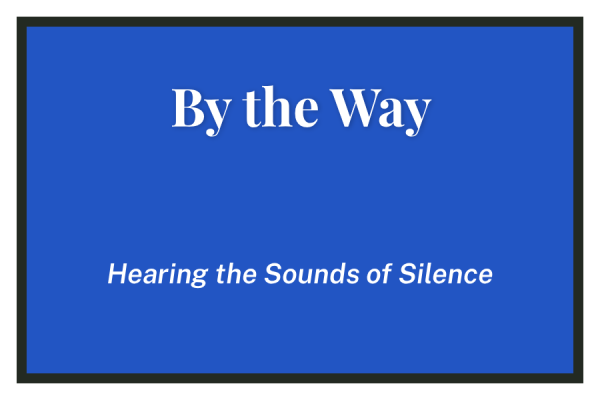Moment of Silence
What Parker is Missing Out On
Illinois Senate Bill 1436 (SB1436), enacted in 2007, mandated that in “each public school classroom the teacher in charge shall observe a brief period of silence with the participation of all the pupils therein assembled at the opening of every school day.” Parker should follow suit and observe its own moment of silence and reflection each morning.
A moment of silence and reflection fits with the goals of our school: be empathetic, respectful, self-conscious, and community-oriented. A moment of silence would not impose on our school day — an extra minute in the morning would be inconsequential when we already take hours each week for non-class related activities. So why aren’t we doing it?
While originally a religious practice, the moment of silence in schools has transformed into a secular time for personal, internal reflection — something that we all need more of in this day and age. In America, the late-20th century implementation of moments of silence in schools is generally attributed to support in the 1980s from an influential Rabbi in New York and President Ronald Reagan. Now, 34 states have legislation that either mandates or recommends a moment of silence in schools. And while these laws have been challenged many times for their religious past, since most states do not encourage (or discourage) prayer, a secular moment of silence is completely constitutional. The moment of silence is simply a moment for reflection.
With everything going on in our lives, it is becoming difficult to find time to be introspective, an important skill and personal practice. I know that I would appreciate the time to sit down and think each morning. Between getting to school, rushing to class on time, and daily life, a moment of silence would be appreciated.
Placing a single minute or so of silence in the morning of the school day gives students a non-disruptive opportunity to reflect, consider themselves and others, think forward to the day ahead, or anything else they might want to consider.
A prompt is sometimes provided during a moment of silence. Walter Payton College Prep practices the “Payton Pause” each afternoon. Students are sometimes provided with a prompt to consider. Other times there is no guidance and students direct themselves internally. The beauty of a moment of silence is that the only rule is to be quiet. Again, this is why lawsuits against moments of silence have failed — students have free will to think about anything during the moment of silence.
More than being a ‘nice idea,’ the positive benefits of a moment of silence have been scientifically proven time and time again. According to a story from the Jewish Newspaper “The Forward” about P.S. 191, a New York public school that instituted a moment of silence, the benefits are considerable. At a school with low attendance and students struggling with poverty and homelessness, the moment of silence, according to a school counselor, boosted attendance rates, punctuality, and improved overall behavior of students.
Further scientific studies and reports corroborate this evidence. In an article titled “A Moment of Silence: A Simple Way to Improve Schools/Society” from Psychology Today, Dr. Izzy Kalman explains that a moment of silence encourages both better self-control and introspection, and also “sets the mood for the rest of the day.” Dr. Kalman also notes that a moment of silence is essentially a form of meditation, a common practice whose beneficial properties have been well-documented. And in speaking with Parker teachers who have taught at schools that practice a moment of silence, many have told me that they have seen similar benefits first hand.
All the facts point towards a moment of silence being a beneficial and productive addition to a school day. It surprises me that Parker does not already have its own moment of silence. Maybe it’s the religious connotation and past of the idea of a moment of silence that scares people in our increasingly irreligious, secular country (though that’s another story). But at Parker we learn from the New Testament at the beginning of each year, when we read Corinthians 12:14–26 and hear about the interdependence of a community with the metaphor of the human body. Its religious origins do not make it any less of an educational and informative experience. So if we can read from the Bible every year, surely we can take a minute to think.
Even those who believe in nothing can understand the message of Corinthians. We can do the same with a moment of silence. Whether you’re an atheist or religious, it’s clear we all need time to sit down, be quiet, and think. Most everyone else does it. We at Parker should too.






